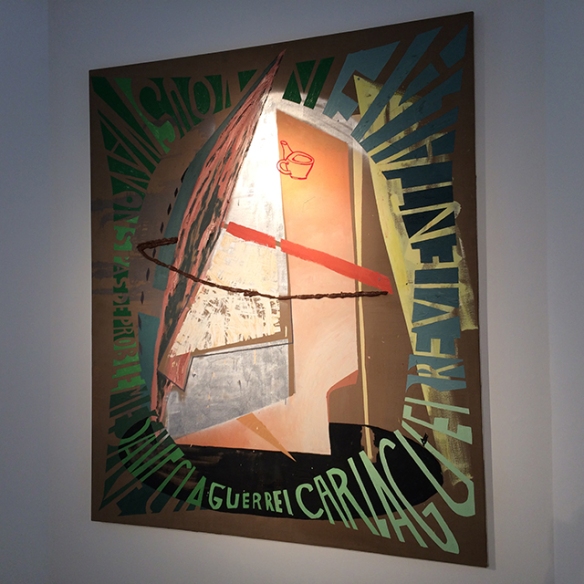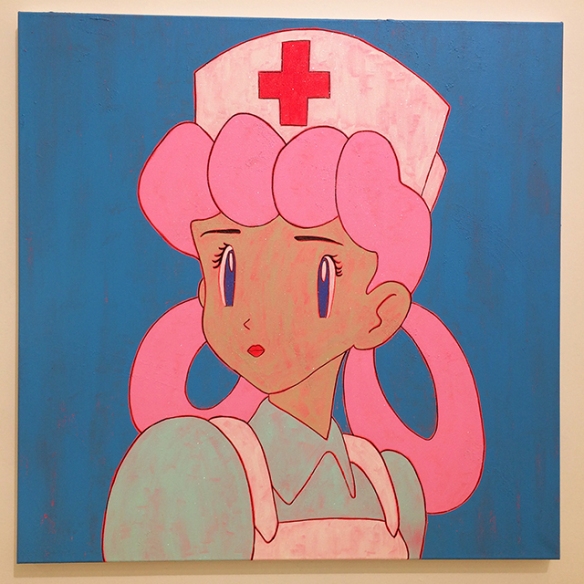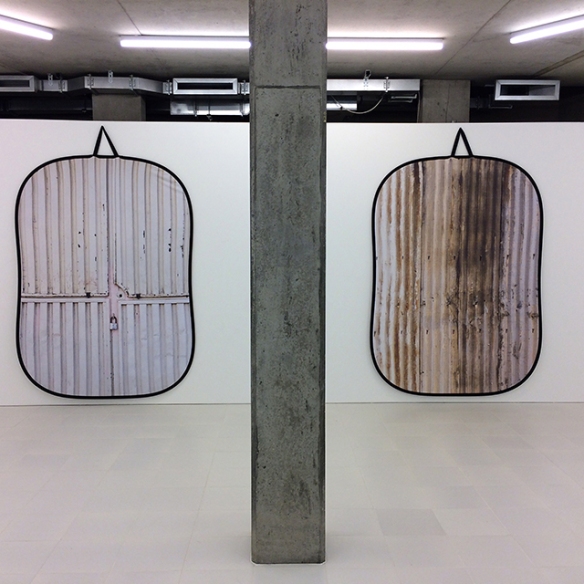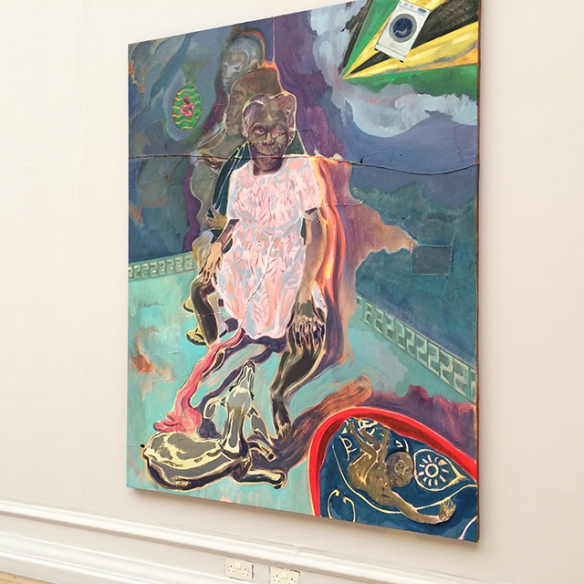At Blain Southern, Rachel Howard has produced a series of black and white paintings including an interesting one with a wallpaper motif. She appears to have then developed this image extensively in red and on a larger scale with four examples shown in the adjacent gallery. For the artist, wallpaper is a powerful motif because it represents the liminal space between a safe domestic environment and uncontrollable external events such as war. In some areas the wallpaper appears to reveal this external space through a semi-transparency, whilst the red of the pattern itself becomes a vehicle for introducing a more free-flowing use of red paint symbolic, of course, of blood and strife.
Meanwhile in the downstairs gallery, Brian Griffiths has created a puppet-like character which he has presented against simple cardboard and wooden off-cut stage sets on the gallery walls. The artist’s characteristic use of visual metaphor is clearly apparent in these simple backdrops commandeering, for example, a second hand spindle to function as a high-tech sun lamp. The introduction of figurative elements is by no means new to the artist’s oeuvre but the combination of low-tech figure in low-tech background is an interesting development.
It would then be a long loop up to Notting Hill via the Regent’s Canal followed by a return through Hyde Park, which lands me back amongst the Mayfair galleries and the shiny black door of Michael Werner bejewelled with brass trimmings. Peter Doig has produced a set of images based on a powerful looking figure standing astride a sandy beach. The paraphernalia of a red and white flotation device lends an air of the everyday to the image as well as pleasing colour harmonies whilst the figure itself is more reminiscent of the mythical tales of Odysseus and a Greek ideal of the male physique.
Craig Kauffmanm is on display at Sprueth and Magers with work from the 60’s that uses bright plastics. In the main window is a stunning display incorporating work by this artist alongside additional works by Donald Judd and Robert Morris. Each of the works by the three artists has been produced in a single coloured plastic and seen together they create an overall harmony as the eye moves from one piece to the other, resting upon a single colour before moving to the next. The plastic used by Craig Kauffman is actually slightly transparent and the effect is to make his works look delicious with the coloured lozenge of plastic both reflecting a warm glow of light but also, in some cases, projecting a coloured patch onto the gallery walls.
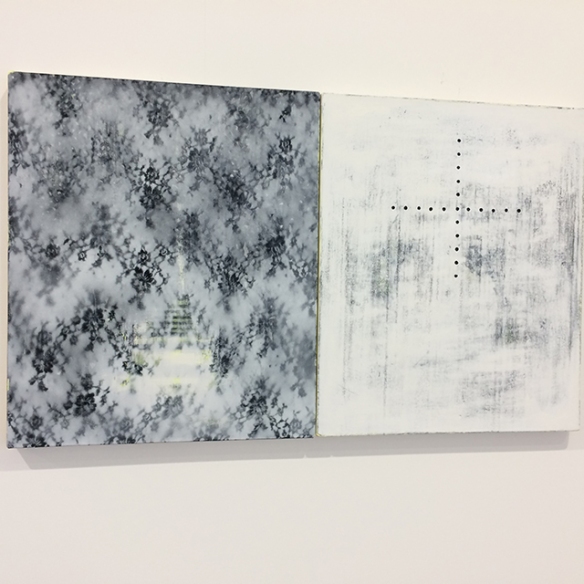
Rachel Howard of Blain Southern with a wallpaper motif that she has then developed extensively in a further series.

Brian Griffiths at Blain Southern has created a puppet-like character presented in simple cardboard stage sets on the gallery walls.

Wim Wenders of Blain Southern showing a selection of his Polaroids at The Photographers Gallery. These were an important part of his movie film preparations.

Peter Doig at Michael Werner.

Josh Smith at Massimo De Carlo with colourful depictions of the Grim Reaper.

Bridget Riley at David Zwirner with new work.
Delete Comment

Craig Kauffman at Sprueth Magers with works from the 60’s using bright plastics.

Andreas Schulze at Sprueth Magers with colourful pipework.
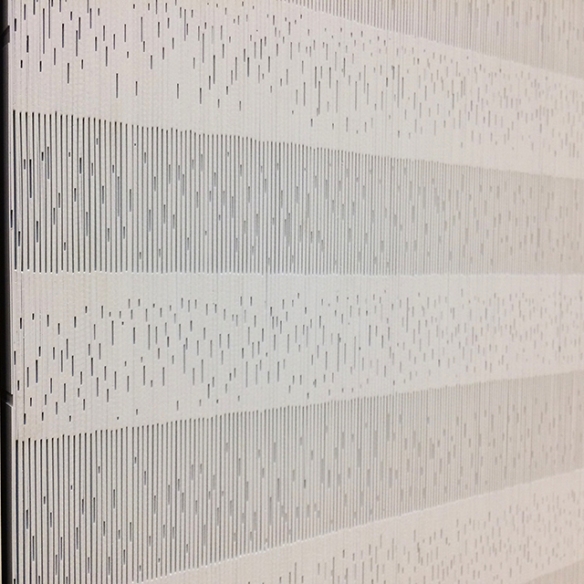
Tara Donovan of Pace Gallery has created a series of images using stacked cards with small cut-out sections.









